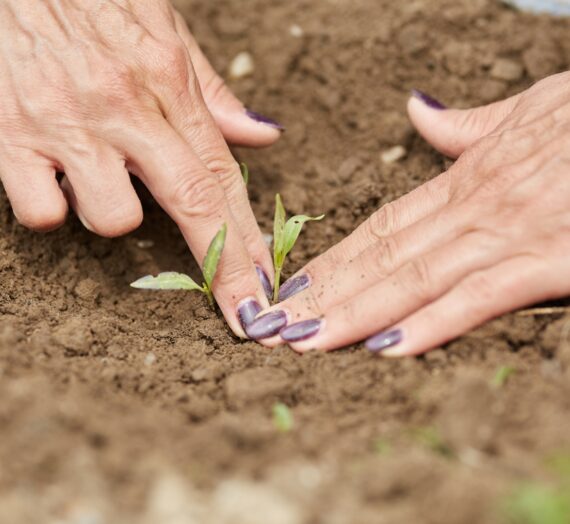Blessing is a catch-all word. From prosperity gospel to the laying on of hands, it is used to describe a transactional approach to our relationship with God: we do something and believe we are ‘blessed’ as a result. But when we try to connect those specific dots in our lives, things can get tricky. Such a transactional view may challenge our faith as often as it affirms it. In this follow-up conversation, Cynthia and Susan take another look at some complicated ways Latter-day Saints perceive, experience, and express the idea of blessing.

Notes & Quotes:
Restoration: God’s Call to the 21st Century World, by Patrick Q. Mason
What is Tithing?, The Church of Jesus Christ of Latter-day Saints
Tithing: A Test of Faith with Eternal Blessings, by Robert D. Hales
The Meaning of Mary Magdalene: Discovering the Woman at the Heart of Christianity, by Cynthia Bourgeault
Joseph Smith’s Teachings about Priesthood, Temple, and Women, The Church of Jesus Christ of Latter-day Saints
Sisters in Spirit: Mormon Women in Historical and Cultural Perspective, ed. by Maureen Ursenbach Beecher & Lavina Fielding Anderson (out of print)
“…one thing is becoming increasingly clear to me: that You cannot help us, that we must help You to help ourselves. And that is all we can manage these days and also all that really matters: that we safeguard that little piece of You, God, in ourselves. […] Alas, there doesn’t seem to be much You Yourself can do about our circumstances, about our lives. Neither do I hold You responsible. You cannot help us, but we must help You and defend Your dwelling place inside us to the last.” — Etty Hillesum
“Our lives are not problems to be solved. We can have meaning and beauty and love, but nothing even close to resolution.” — Kate Bowler
“The Saints had once viewed prosperity through a communitarian lean–acquired wealth was a gift from God for the good of all. But after the pioneer generation passed away, they came to regard wealth in much the same terms as the rest of American culture, as a means to maximize the interests of the private individual or corporation. Simply put, we picked up America’s allergy to talking about inequality and began to skim over scriptural mandates that had once been central to the Restoration…..At times we have even verged dangerously close to embracing a Latter-day Saint version of the prosperity gospel, the operating assumptions of which are that god wants us to be rich and comfortable, and that wealth is a sign of his favor. That is not the gospel Jesus preached…….The Restoration’s worldview should be shaped more by Joseph Smith than Adam Smith.” — Patrick Mason (pp. 66-7)
“’Bring ye all the tithes … and prove me now herewith … if I will not open you the windows of heaven, and pour you out a blessing, that there shall not be room enough to receive it’ (Malachi 3:10). That’s a powerful promise. You can test the principle of tithing in your own life. As you pay tithing, you will see how God delivers on His promises. You will come to know Him better, and your faith in Him will grow.”
— What is Tithing?
“The strict observance of the law of tithing not only qualifies us to receive the higher, saving ordinances of the temple, it allows us to receive them on behalf of our ancestors. When asked whether members of the Church could be baptized for the dead if they had not paid their tithing, President John Taylor, then of the Quorum of the Twelve, answered: ‘A man who has not paid his tithing is unfit to be baptized for his dead. … If a man has not faith enough to attend to these little things, he has not faith enough to save himself and his friends.’” — Robert D. Hales
“Because anointing is still the most underdeveloped of the Christian rituals, it is also the most open ended. It comes without that huge weight of sacramental baggage attached to the more familiar rituals of baptism and eucharist. And without the heavy backload of male and priestly stereotypes that are automatically triggered in the other two. Unlike the eucharist, anointing for healing has never been officially closed to the lay officiants. And some of its most powerful practitioners have traditionally been women. In other words it has fewer negative associations and tends to allow for fresh experiences.
The fact that it is intrinsically connected to the feminine is yet another factor working in its favor. If baptism and eucharist come with heavy doctrinal safeguards around them and well defined roles and response patterns, anointing is still a marvelously and understated ritual, less defended theologically and with natural associations with Mary Magdalene. It is an obvious window of opportunity.”
— Cynthia Bourgeault (ch. 15)
“Women’s participation in healing blessings gradually declined in the early 20th century as Church leaders taught that it was preferable to follow the New Testament directive to ‘call for the elders.’ By 1926, Church President Heber J. Grant affirmed that the First Presidency ‘do not encourage calling in the sisters to administer to the sick, as the scriptures tell us to call in the Elders, who hold the priesthood of God and have the power and authority to administer to the sick in the name of Jesus Christ.’ Currently, the Church’s Handbook 2: Administering the Church directs that “only Melchizedek Priesthood holders may administer to the sick or afflicted.” — Joseph Smith’s Teachings About Priesthood, Temple, and Women
“The connections between and among women are the most feared, the most problematic, and the most potentially transforming force on the planet.” — Adrienne Rich
“The concept of women holding the priesthood in connection with their husbands was reinforced when husbands and wives joined together in blessings. When W. Woodruff’s namesake son, just ordained a priest, was about to begin his duties, the senior Woodruff summoned his household together, then recorded in third person, ‘His father and mother laid hands upon him and blessed him and dedicated him unto the Lord.’ In 1857 George Goddard recorded that on the sixteenth birthday of his son, Brigham H., ‘his Mother and Myself , put our hands upon his head and pronounced a parents blessing upon him.’”
—Linda King Newell (Sisters in Spirit, p. 119)
“Certainly the women saw their organization as more than a charitable society. In their meetings they not only discussed spiritual gifts such as speaking in tongues and healing the sick, but they openly practiced them. With JS’s approval, Emma and her counselor laid hands on their sick sisters and blessed them that they might be healed. The fifth time the RS convened, Sarah Cleveland invited the women to speak freely. A Sister Durfee ‘bore testimony to the great blessing she received when administered to after the close of the last meeting by Pres E. Smith and her Councilors Cleveland and Whitney, she said she never realized more benefit thro’ any administration,’ for ‘she had been healed and thought the sisters had more faith than the brethren.’ After that meeting, Sarah Cleveland and Elizabeth Whitney administered to another RS member, Abigail Leonard, ‘for the restoration of health.’”
“In the intervening week, someone apparently reported to Joseph Smith that women were laying their hands on the sick in blessing and questioned the propriety of such acts. The Mormon leader addressed his answer directly to the women in the next meeting: ‘There could be no devil in it, if God gave his sanction by healing….there could be no more sin in any female laying hands on the sick than in wetting the face with water.’ He also indicated that there were women who were ordained to heal the sick and it was their privilege to do so, ‘If the sisters should have faith to heal the sick,’ he said, ‘let all hold their tongues.’” — Linda King Newell (Sisters in Spirit, p. 117)



